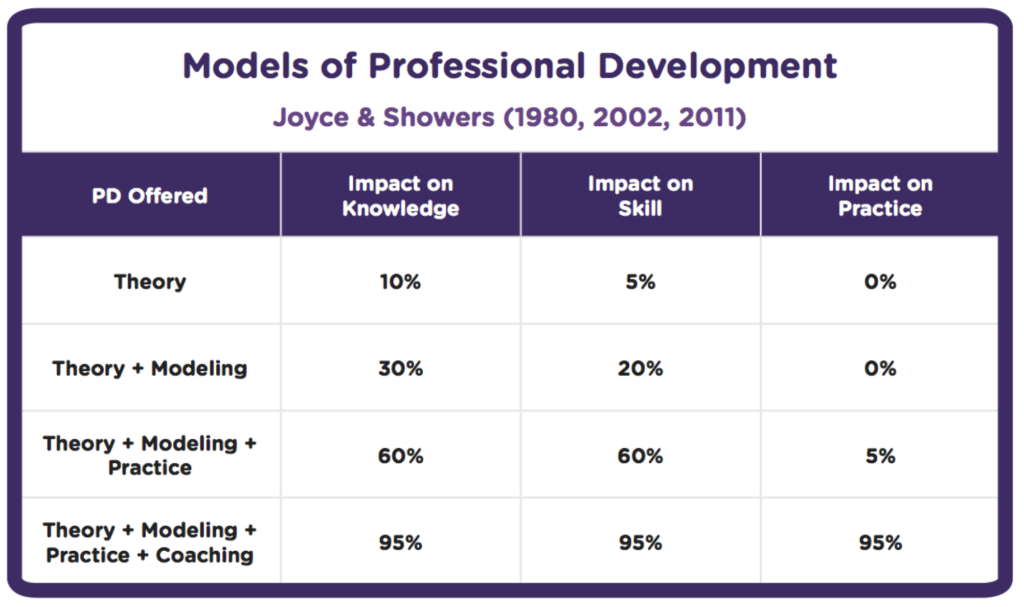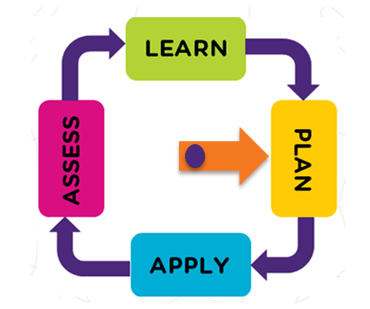Building a Culture of Continuous Learning for Teachers
MAY 17, 2021
We’re all familiar with the traditional model of professional development: an outside consultant comes in during the summer or at the beginning of the school year, spends a few hours or a couple of days introducing the new program or initiative, and leaves teachers with a stack of implementation materials. And then teachers go back to the classroom, put the materials on the shelf beside the materials from last year’s new initiative, and go back to teaching the same way they always have. It’s no mystery why this model for PD doesn’t spark lasting change in classroom practice. The mystery is why we ever expected it to in the first place. The truth is, teachers, much like their students, need more than a one-shot lecture to master and apply new material. Effective professional development takes place within a continuous “Cycle of Learning” that includes targeted instruction, planning, application, and assessment.
Helping Teachers Move from Theory to Practice
When evaluating the effectiveness of a professional development program, it’s not enough to look at what teachers know after the training. The real key is how much of that knowledge they transfer into actual classroom practice. Learning Forward’s recommendations for “21st-Century Professional Development” say that PD should take place “within communities that are committed to continuous improvement, collective responsibility, and goal alignment.” Bruce Joyce and Beverley Showers have extensively studied the impact of different professional development models. Their work clearly shows that using ongoing, sustained professional development models—including theory, modeling, practice, and coaching—substantially increases the transfer of new knowledge into actual classroom practice.

The Cycle of Learning
So what does continuous learning look like? One way to think about it is as a four-part Learning Cycle.

Here’s what that might look like in practice.
- Learn: Teachers are introduced to new material.
- Plan: Teachers work with coaches or in peer groups to plan how they will apply the new material in the classroom and how it fits within the larger strategic goals of the school.
- Apply: Teachers apply the new program or strategy with their students using the plan they developed.
- Assess: Teachers come back together to evaluate the success of the implementation, assess progress towards strategic goals, and identify areas in need of improvement or further training.
- Learn: Teachers are provided with targeted learning opportunities based on the needs identified during assessment, and the cycle begins again.
Learning All Year Long
To make this model effective, the Learning Cycle needs to be a continuous process. Instead of a “one and done” training opportunity, teachers are continually learning, applying, and refining their understanding. This requires a shift in the way most schools think about professional development. Instead of relying solely on outside expert trainers, schools need to build up and empower teachers in their school to be peer leaders and coaches. They also need to find ways to embed ongoing professional development opportunities throughout the school year. Fortunately, online learning and collaboration tools make it easier than ever for schools to create a culture of continuous learning. We’ll explore the Learning Cycle and tools for 21st Century Professional Development in more depth in future blogs.
Continue Reading
July 15, 2024
"Initiative overload" can cause teachers and school leaders to lose sight of the fundamental practices that have the greatest impact on their goals and mission. When this happens, it's time for a reboot.
June 17, 2024
To understand contemporary issues and participate fully in civic life, students need a solid grounding not only in basic facts, but also in essential critical thinking skills. Thinking Maps can help students develop the thinking skills they need to ask relevant questions, detect bias and misinformation, connect past and current events, and understand the changing world around them.
May 16, 2024
Mastering Science Concepts and Content in K12 | Thinking Maps Support student mastery of the Core Ideas and Crosscutting Concepts in the Next Generation Science Standards (NGSS) with Thinking Maps. Learn more on the blog:
April 15, 2024
Scientific thinking empowers students to ask good questions about the world around them, become flexible and adaptable problem solvers, and engage in effective decision making in a variety of domains. Thinking Maps can help teachers nurture a scientific mindset in students and support mastery of important STEM skills and content.